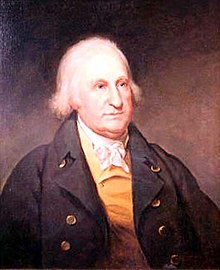John Eager Howard | |
|---|---|
 Oil painting of John Eager Howard by Charles Willson Peale (1823) | |
| President pro tempore of the United States Senate | |
| In office November 21, 1800 – November 27, 1800 | |
| Preceded by | Uriah Tracy |
| Succeeded by | James Hillhouse |
| United States Senator from Maryland | |
| In office November 21, 1796 – March 3, 1803 | |
| Preceded by | Richard Potts |
| Succeeded by | Samuel Smith |
| 5th Governor of Maryland | |
| In office November 24, 1788 – November 14, 1791 | |
| Preceded by | William Smallwood |
| Succeeded by | George Plater |
| Member of the Maryland Senate | |
| In office 1791–1795 | |
| Personal details | |
| Born | John Eager Howard June 4, 1752 Baltimore County, Maryland, British America |
| Died | October 12, 1827 (aged 75) Baltimore County, Maryland, U.S. |
| Resting place | Old Saint Paul's Cemetery, (of Old St. Paul's Episcopal Church, cemetery at West Lombard Street and modern Martin Luther King Jr. Boulevard |
| Political party | Federalist |
| Spouse | |
| Children | 9, including George, Benjamin, and William |
| Signature | |
John Eager Howard (June 4, 1752 – October 12, 1827) was an American soldier and politician from Maryland. He was elected as governor of the state in 1788, and served three one-year terms. He also was elected to the Continental Congress, the Congress of the Confederation, the United States Senate, and the Maryland Senate.[1] In the 1816 presidential election, Howard received 22 electoral votes for vice president on the Federalist Party ticket with Rufus King; the ticket lost to Democratic-Republicans James Monroe and Daniel D. Tompkins in a landslide.
Howard County, Maryland, is named for him, as are three streets in Baltimore.[2] For seven days in November 1800, Howard was president pro tempore of the Senate.
- ^ United States Congress. "John Eager Howard (id: H000841)". Biographical Directory of the United States Congress. Retrieved December 5, 2012.
- ^ "Index to Politicians: Howard". The Political Graveyard. Lawrence Kestenbaum. Retrieved June 15, 2009.